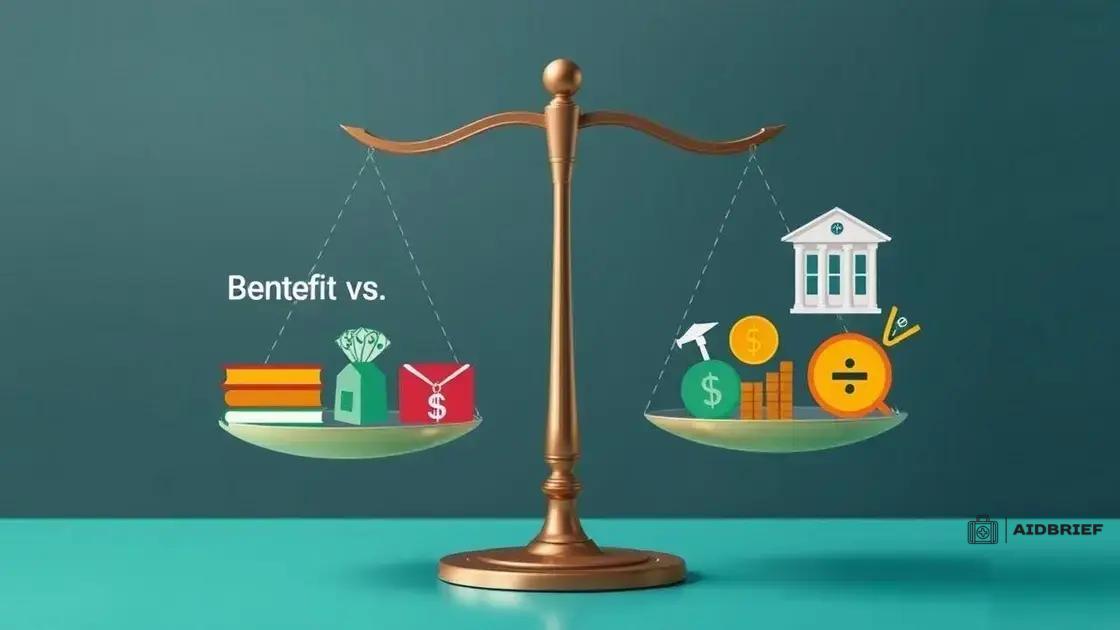Texas school voucher program expansion: what you need to know

The Texas school voucher program expands educational choices by allowing families to use state funds for private or charter school tuition, while raising concerns about funding and equity in public education.
The Texas school voucher program expansion is sparking conversations about educational opportunities. Wondering how this affects your child’s schooling? Let’s explore!
What is the Texas school voucher program?
The Texas school voucher program is designed to give families more choices in education. This program enables parents to use state funds to pay for tuition at private or charter schools. Instead of being limited to their local public school, families can explore different educational options that may better meet their children’s needs.
How the Program Works
Parents who qualify can receive vouchers that cover some or all of their child’s tuition. This process allows families to choose schools based on academic performance or special programs. Schools that accept vouchers must meet certain standards to ensure quality education.
Eligibility Requirements
To be eligible for a school voucher in Texas, families typically must meet specific income guidelines. These guidelines may vary based on the type of voucher program available. Key eligibility criteria often include:
- Household income limits
- Age or grade level of the child
- Residency in Texas
- Enrollment in a qualifying school
Understanding these requirements is crucial for parents considering the program. Additionally, the Texas school voucher program intends to foster competition among schools, which may lead to overall improvements in education.
Many parents appreciate the opportunity to choose an educational environment that reflects their values and preferences. This flexibility can help children thrive academically and socially. It also helps to spotlight the need for schools to cater to the diverse needs of families.
Potential Challenges
Despite the benefits, some challenges exist. Opponents argue that voucher programs can divert much-needed funds from public schools. There are concerns about accountability and oversight for schools that benefit from vouchers. Families should weigh these factors when considering the program.
Ultimately, the Texas school voucher program aims to create a wider array of choices for students. Knowing the ins and outs can help parents make informed decisions concerning their child’s education.
History and evolution of vouchers in Texas
The history and evolution of vouchers in Texas is a story of change and choice in education. The concept of school vouchers emerged as a way to provide families with more options beyond the traditional public school system. This idea has gained traction over the years, influencing discussions about education policy.
Early Beginnings
The first discussions about school vouchers in Texas began in the 1990s. Lawmakers and advocates proposed the idea as a solution to educational shortcomings. Many believed that giving parents the power to choose schools would lead to improved educational outcomes for children.
Legislative Changes
In the early 2000s, Texas initiated pilot programs that allowed a limited number of families to use vouchers. These initial attempts were crucial in shaping the conversation around the potential benefits and drawbacks of such programs. Over the years, more comprehensive proposals were introduced, aiming to expand voucher options.
- In 2011, a program was established for students with disabilities.
- The 2015 legislative session saw discussions about broader voucher proposals.
- Recent years have continued to see debates about funding and eligibility.
The evolution of vouchers in Texas reflects changing attitudes towards education. Many supporters argue that vouchers empower parents, while opponents express concern over the impact on public schools. These discussions have played a significant role in shaping current and future educational policies.
Today, Texas is at a crossroads where the future of school vouchers remains a hot topic. As families consider their educational options, understanding this history helps them navigate the choices available.
Key benefits and potential drawbacks

Understanding the key benefits and potential drawbacks of the Texas school voucher program is essential for parents and policymakers. This program offers various advantages aimed at improving education, while also raising certain concerns.
Benefits of School Vouchers
One of the significant benefits of the Texas school voucher program is increased choice for families. Parents can select schools that align with their children’s needs and preferences. Additionally, vouchers can lead to greater competition among schools, which may improve overall educational quality.
- Increased educational options for families.
- Potential improvement in school performance due to competition.
- Opportunities for specialized programs tailored to student needs.
Many parents find that being able to use a voucher is empowering. It provides them with the ability to choose a school environment that feels right for their child. Moreover, this can increase student engagement and motivation, potentially leading to better academic outcomes.
Potential Drawbacks
However, there are potential drawbacks to consider as well. Critics argue that school vouchers can divert funding from public schools. This lack of funding can harm the public schools left behind, making it harder for them to provide quality education to all students. Additionally, not all private schools are held to the same standards as public schools, which raises questions about accountability.
- Funding could be redirected from public schools.
- Concerns about accountability in private school education.
- Potential for increased inequality among school options.
The debate surrounding these benefits and drawbacks continues to shape the future of the Texas school voucher program. As parents weigh their options, understanding both sides is vital in making informed decisions about their children’s education.
How the expansion affects families and students
The expansion of the Texas school voucher program significantly impacts families and students across the state. Many parents are excited about the new possibilities that vouchers provide, allowing them to choose educational settings that align more closely with their children’s needs.
Increased Educational Options
With the expansion, families now have access to a wider range of schools, including private and charter institutions. This choice means that parents can select schools that offer specific programs, such as arts, sciences, or special education. These options can be especially beneficial for students who may thrive better in smaller, more tailored environments.
- Access to diverse educational programs.
- Ability to choose schools based on unique student needs.
- Potential for improved student engagement and performance.
As families explore these choices, they may find that specific schools resonate with their values. This autonomy in selecting educational options empowers parents and facilitates better learning outcomes for children. When families feel they have a say in their child’s education, it can lead to increased satisfaction and motivation for all involved.
Challenges and Adjustments
However, there are challenges associated with the expansion. Transitioning to a new school can be daunting for students. They may need to adjust to different teaching styles, social dynamics, and academic expectations. Additionally, not all families may have equal access to information about these new options, which can create disparities in educational choices.
- Adjustment to new school environments.
- Potential gaps in information for some families.
- Concerns about maintaining quality education in public schools.
The impact of the Texas school voucher program expansion is multifaceted. While many families celebrate the increased choices, it is essential to recognize the need for support systems to help students transition smoothly and ensure that all families can access necessary information.
Future outlook for education in Texas
The future outlook for education in Texas is an evolving topic shaped by various factors, including the expansion of the school voucher program. Many believe this program could change the educational landscape significantly. As families embrace more choices, Texas may see shifts in public and private school dynamics.
Innovative Learning Models
As schools adapt to new demands, there is a growing emphasis on innovative learning models. This includes greater use of technology in classrooms, blended learning environments, and personalized education plans tailored to individual student needs. These advancements aim to engage students more effectively and prepare them for future challenges.
- Increased integration of technology.
- Development of personalized learning strategies.
- Greater focus on critical thinking and problem-solving skills.
With these changes, educators may find new ways to cater to diverse learning styles and interests. By incorporating highly engaging instructional methods, schools can significantly enhance student achievement rates.
Challenges Ahead
While the future appears promising, challenges do exist. There are concerns regarding equitable access to quality education across different demographics. Ensuring that every child has access to the same educational opportunities is vital to achieving fairness.
- Addressing funding disparities among schools.
- Providing support for under-resourced communities.
- Monitoring the performance of voucher-accepting schools.
Additionally, as the education system evolves, it will be crucial to assess the effectiveness of school choice initiatives, including the Texas school voucher program. Continuous evaluation is necessary to ensure that these policies serve students’ best interests and contribute positively to the overarching education system.
The outlook for education in Texas remains an area of active discussion and planning. Stakeholders are not only focused on expanding options but also on creating a system that equitably benefits all students across the state.
FAQ – Frequently Asked Questions about the Texas School Voucher Program
What is the Texas school voucher program?
The Texas school voucher program allows families to use state funds to pay for tuition at private or charter schools instead of being limited to public schools.
What are the benefits of the voucher program?
Benefits include increased choice for families, potential improvement in school performance due to competition, and access to specialized programs tailored to students’ needs.
What challenges does the voucher program face?
Challenges include concerns over funding for public schools, potential inequality in access to quality education, and the need for accountability among participating schools.
How does the expansion of the program affect families and students?
The expansion provides more options for families but also requires adjustments for students transitioning to new schools, as well as support to ensure equitable access to information.





